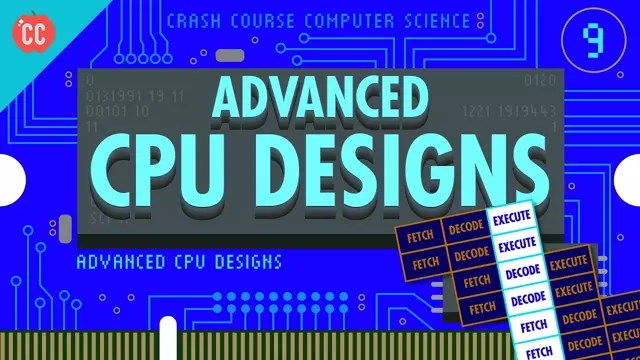2017-04-26
[public] 656K views, 21.4K likes, 238 dislikes audio only
So now that we’ve built and programmed our very own CPU, we’re going to take a step back and look at how CPU speeds have rapidly increased from just a few cycles per second to gigahertz! Some of that improvement, of course, has come from faster and more efficient transistors, but a number hardware designs have been implemented to boost performance. And you’ve probably heard or read about a lot of these - they’re the buzz words attached to just about every new CPU release - terms like instruction pipelining, cache, FLOPS, superscalar, branch prediction, multi-core processors, and even super computers! These designs are pretty complicated, but the fundamental concepts behind them are not. So bear with us as we introduce a lot of new terminology including what might just be the best computer science term of all time: the dirty bit. Let us explain.
Produced in collaboration with PBS Digital Studios: http://youtube.com/pbsdigitalstudios
The Latest from PBS Digital Studios: https://www.youtube.com/playlist?list=PL1mtdjDVOoOqJzeaJAV15Tq0tZ1vKj7ZV
We’ve got merch!
https://store.dftba.com/collections/crashcourse
Want to know more about Carrie Anne?
https://about.me/carrieannephilbin
Want to find Crash Course elsewhere on the internet?
Facebook - http://www.facebook.com/YouTubeCrashC...
Twitter - http://www.twitter.com/TheCrashCourse
Tumblr - http://thecrashcourse.tumblr.com
Support Crash Course on Patreon: http://patreon.com/crashcourse
http://www.patreon.com/crashcourse
http://store.dftba.com/collections/crashcourse
/youtube/video/rtAlC5J1U40?t=0
/youtube/video/rtAlC5J1U40?t=58
/youtube/video/rtAlC5J1U40?t=110
/youtube/video/rtAlC5J1U40?t=334
/youtube/video/rtAlC5J1U40?t=469
/youtube/video/rtAlC5J1U40?t=582
/youtube/channel/UCX6b17PVsYBQ0ip5gyeme-Q
youtube.com/channel/UCq6OAftTQOuUBRdtUDq5SUA
youtube.com/channel/UCwTZ-JLF5FQ3EmQ2nPaS-lg
/youtube/video/tpIctyqH29Q

